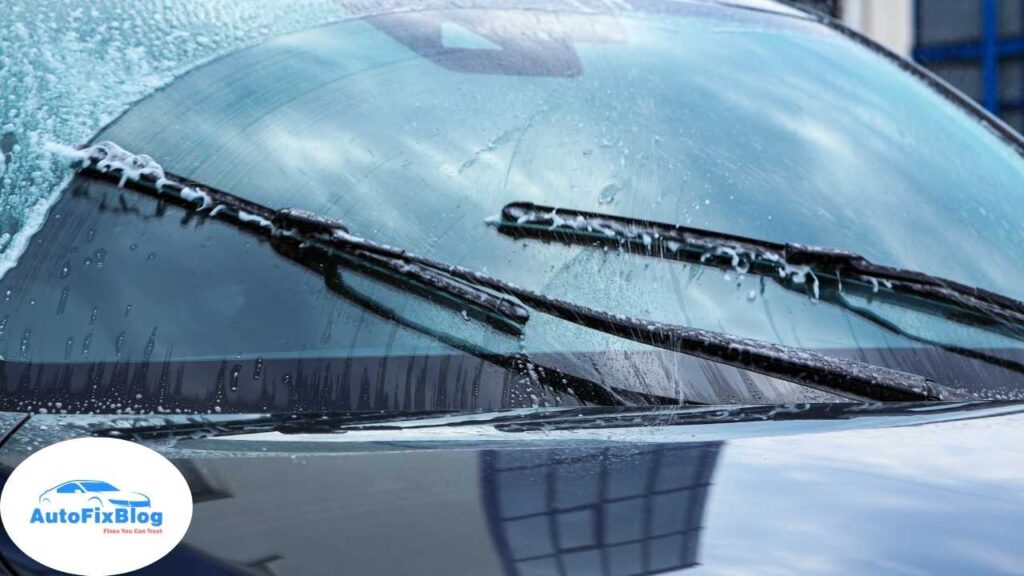Keeping your car’s windshield clean is essential for safe driving, especially in challenging weather conditions. While commercial washer fluids are widely available, you can make your own with a few household ingredients.
Learning how to make car window washer fluid not only saves you money but also lets you customize the formula to your needs, making it more environmentally friendly and effective for your climate. In this article, we’ll explore various methods for creating washer fluid and share tips on using it effectively in different conditions.
1. Why Make Your Own Washer Fluid?
There are several reasons to consider making your own windshield washer fluid instead of buying it:
- Cost Savings: DIY washer fluid can be much cheaper than store-bought options, particularly if you drive often and go through a lot of fluid.
- Customization: You can tailor your solution to suit different weather conditions, adding more de-icing power in winter or focusing on removing bugs and pollen in summer.
- Eco-Friendly: Many commercial fluids contain chemicals that may be harmful to the environment. By making your own, you can control the ingredients and choose eco-friendly options.
- Convenience: Running out of washer fluid is frustrating, but knowing how to make car window washer fluid allows you to mix up a new batch whenever you need it.
2. Basic Ingredients for DIY Washer Fluid
To start, here are a few common ingredients you may use in different recipes:
- Distilled Water: Essential for preventing mineral deposits and streaks on your windshield. Tap water can leave residue, especially in areas with hard water.
- White Vinegar: Helps cut through grime and acts as a natural antifreeze, making it suitable for colder temperatures.
- Rubbing Alcohol (Isopropyl Alcohol): Lowers the freezing point of the solution, preventing it from icing up in winter.
- Dish Soap: A small amount of dish soap helps break down grease and grime but should be used sparingly to prevent excessive foaming.
- Ammonia: Known for its powerful cleaning properties, ammonia can be used in small amounts to make a strong cleaning solution.
3. Simple All-Weather Washer Fluid Recipe
For a straightforward recipe that works well in most conditions, follow these steps:
Ingredients:
- 3 cups distilled water
- 1 cup white vinegar
- A few drops of dish soap
Instructions:
- Pour the distilled water and vinegar into a clean container and stir gently.
- Add a few drops of dish soap and mix again until combined.
- Pour the mixture into your car’s washer fluid reservoir.
This mixture effectively cleans dirt, grime, and bug residue without leaving streaks. Since vinegar has a relatively low freezing point, this recipe should work well in mild winter temperatures, but it may freeze in extremely cold climates.

4. Winter Washer Fluid Recipe
In cold weather, you need a washer fluid that won’t freeze on contact with your windshield. Here’s how to make car window washer fluid that’s suitable for winter:
Ingredients:
- 2 cups distilled water
- 1 cup rubbing alcohol (70% or higher)
- 1 tablespoon white vinegar
- A few drops of dish soap
Instructions:
- Mix distilled water, rubbing alcohol, and vinegar in a clean container.
- Add a few drops of dish soap and stir the mixture.
- Pour the solution into your washer fluid reservoir.
Rubbing alcohol lowers the freezing point of the fluid, preventing it from freezing even in subzero temperatures. If you live in a region with extremely cold winters, you can increase the amount of rubbing alcohol for added freeze protection.
5. Heavy-Duty Bug-Removing Washer Fluid
Insects, bird droppings, and pollen can make it difficult to see through your windshield, especially during warmer months. For a solution that cuts through tough residue, try this recipe:
Ingredients:
- 3 cups distilled water
- 1 cup ammonia
- A few drops of dish soap
Instructions:
- Combine distilled water and ammonia in a clean container.
- Add a few drops of dish soap and stir until mixed.
- Pour the fluid into your washer reservoir.
Ammonia’s strong cleaning power makes it ideal for removing bugs and tough grime. However, use this recipe only in warmer weather, as ammonia can lose its effectiveness in colder temperatures.
6. Eco-Friendly DIY Washer Fluid
If you’re concerned about environmental impact, here’s how to make car window washer fluid using gentle, eco-friendly ingredients:
Ingredients:
- 4 cups distilled water
- 1 cup white vinegar
- 1 teaspoon natural liquid soap (plant-based, biodegradable)
Instructions:
- Mix the distilled water and vinegar in a container.
- Add the natural liquid soap and stir until well combined.
- Transfer the mixture to your car’s washer fluid reservoir.
This recipe avoids harsh chemicals while still offering good cleaning power, making it ideal for environmentally-conscious drivers. It’s also suitable for mild climates where freezing is not a major concern.
7. Tips for Using Homemade Washer Fluid
Now that you know how to make car window washer fluid, here are some additional tips for maximizing its effectiveness:
- Use Distilled Water: Always use distilled water to avoid mineral deposits that could clog your car’s spray nozzles.
- Label the Fluid: If you make large batches, label the container and store it in a cool, dry place away from children and pets.
- Adjust for Season: Change your washer fluid to a winter formula when temperatures drop to prevent freezing.
- Check Compatibility: Homemade fluids work for most vehicles, but always check your car’s manual to ensure no specific restrictions are mentioned.
8. Safety Precautions for DIY Washer Fluid
When working with certain ingredients like rubbing alcohol and ammonia, always take the following precautions:
- Ventilation: Make sure you’re in a well-ventilated area while mixing, especially when using ammonia or rubbing alcohol.
- Avoid Contact: Wear gloves to protect your skin, and avoid getting the solution on painted surfaces.
- Store Safely: Keep any leftover fluid in a properly labeled container, away from children and pets.
9. When to Consider Commercial Washer Fluids
While making your own fluid is convenient, there are times when buying a commercial washer fluid may be necessary:
- Extreme Cold: Commercial fluids designed for extremely low temperatures may work better in freezing conditions.
- Special Needs: Certain vehicles, especially high-end models, may have sensitive washer systems, so using a manufacturer-recommended fluid could be wise.
- Time Constraints: If you’re short on time or supplies, purchasing a ready-to-use fluid is a quick and reliable solution.
Knowing how to make car window washer fluid gives you flexibility, cost savings, and the chance to tailor your washer fluid to specific needs or seasons. By experimenting with various recipes, you can create a cleaning solution that tackles everything from winter frost to summer bugs.
Whether you’re into auto fixing as a hobby or simply want to be prepared for every season, these DIY washer fluid solutions make it easy to maintain a crystal-clear windshield year-round.
By following these recipes and tips, you’ll be equipped with an effective, budget-friendly solution to keep your windshield clean, improve visibility, and enhance your driving safety.



